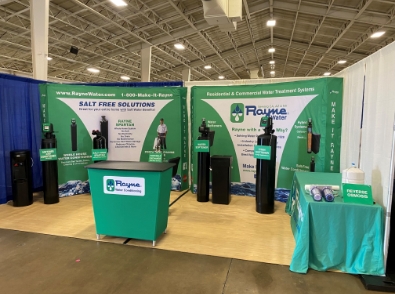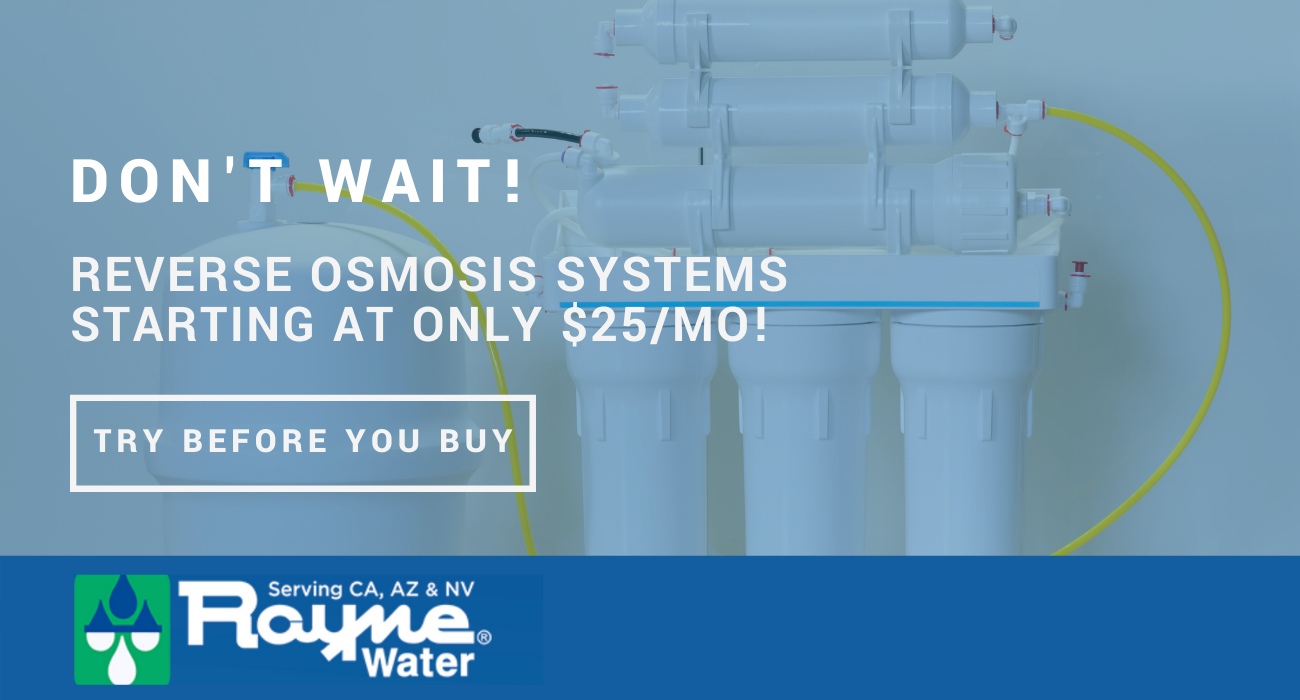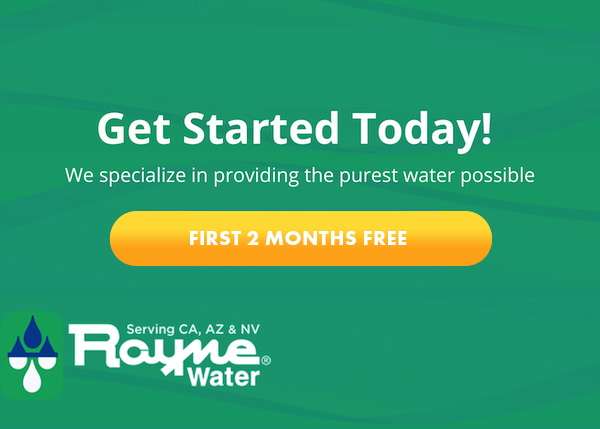What exactly is reverse osmosis water? It’s like giving your tap water a luxury spa treatment.
Through a filtration process called reverse osmosis, water is forced through a semipermeable membrane that acts like a fine sieve. This removes any contaminants and impurities that are bigger than water molecules, such as chlorine, lead, and other substances.
The end product? Water that isn’t just safer and cleaner but also tastes fresher. This is because it’s virtually free from the impurities that give water a bad taste or odor.
If you’re curious about reverse osmosis systems or wondering about their benefits, Rayne Water is ready to help.
What Are the Pros and Cons of Drinking from a Reverse Osmosis Water System?

When it comes to reverse osmosis (RO) water systems, there are many advantages to consider. to consider.
Let’s take a closer look at the pros and cons of drinking water from an RO system:
The Benefits of Reverse Osmosis Water Systems
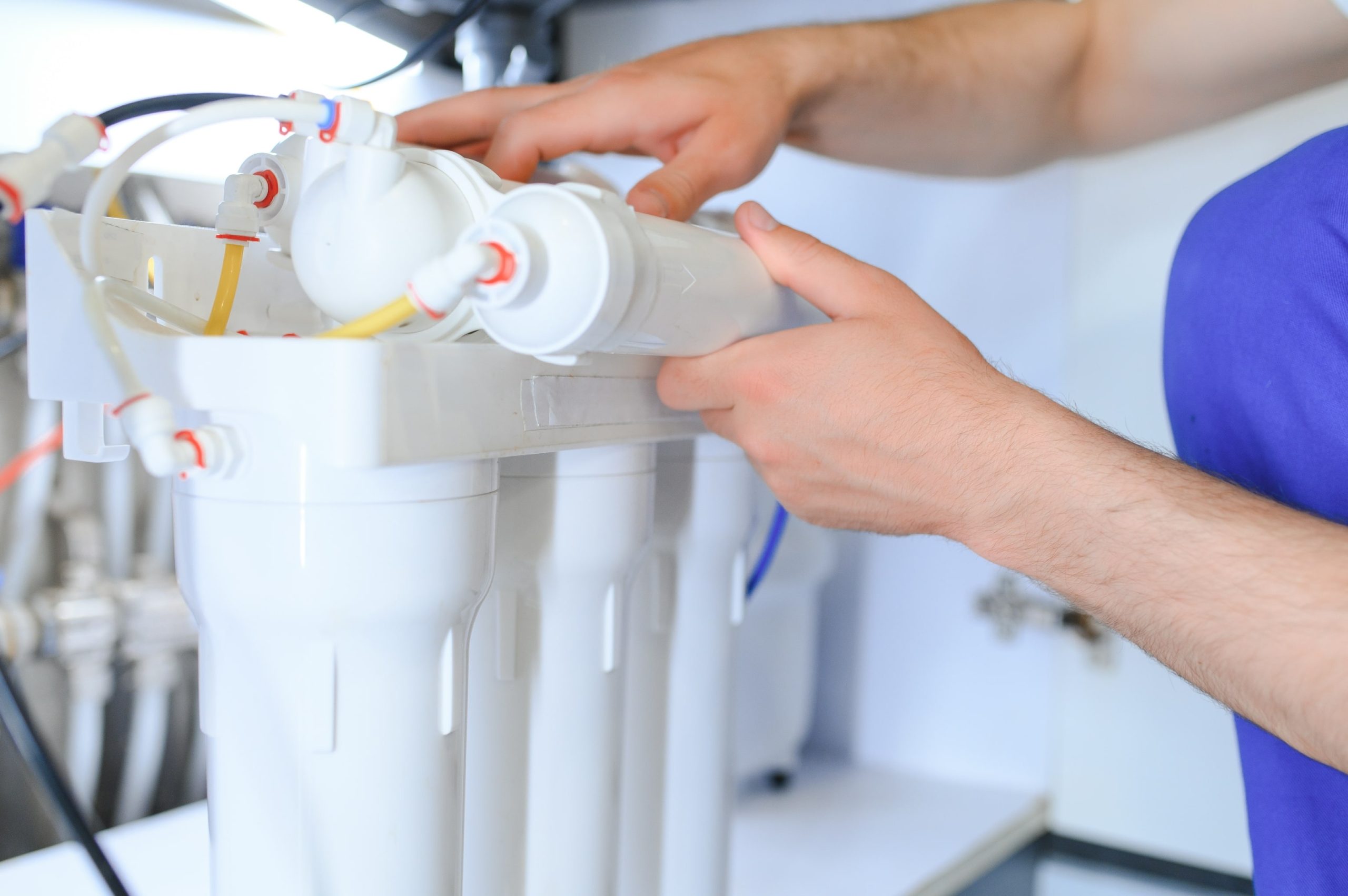
Pro #1: Effective Contaminant Removal
Reverse osmosis is highly efficient in removing a wide range of contaminants from water. It can eliminate impurities like chlorine, lead, arsenic, nitrates, fluoride, and more, providing you with cleaner and purer water.
Pro #2: Improved Taste and Odor
Many people find that water from an RO system has a crisp, refreshing taste compared to tap water. The removal of impurities can also enhance the odor and overall quality of the water.
Pro #3: Healthier Alternative
By removing potentially harmful substances, RO water is a healthier choice, especially for individuals with weak immune systems or specific health concerns.
Pro #4: Versatility
RO systems can be installed as point-of-use filters, allowing you to have clean drinking water right from your tap or as whole-house systems to ensure purified water throughout your home.
How Does Reverse Osmosis Work?
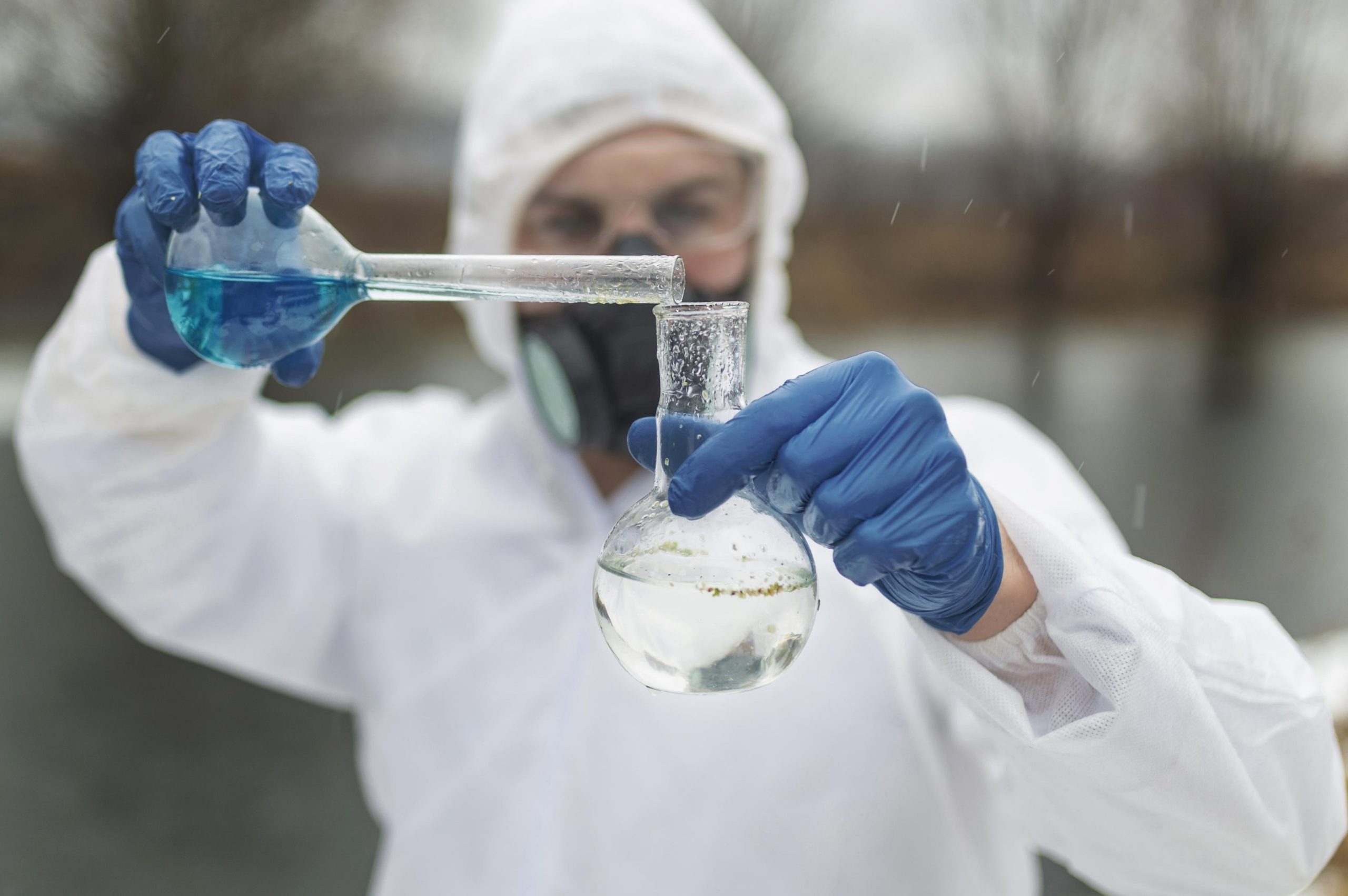
Reverse osmosis water purification is one of the most popular methods of water purification today.
Reverse osmosis is critical to a number of industries, including electronics manufacturing, agriculture, pharmaceutical manufacturing, and the food and beverage industry, and also an important residential water purification technique.
In reverse osmosis systems, a water supply containing unwanted contaminants is forced at high pressure through a specialized membrane. The membrane in a reverse osmosis system has tiny pores. The pores in the membrane allow water molecules to pass but not larger contaminants.
The drinking water produced by reverse osmosis contains very few contaminants, while the water on the contaminated side of the barrier containing concentrated levels of contaminants is flushed down the drain.
In short, reverse osmosis water treatment produces clean, safe drinking water without the use of chlorine or other cleansing agents commonly found in municipally purified water.
The Mechanisms Behind Reverse Osmosis
Imagine osmosis as nature’s way of balancing concentration: water naturally moves from a less concentrated area to a more concentrated one. Reverse osmosis, as the name suggests, reverses this process.
In a reverse osmosis water system, pressure is applied to push water through a selective membrane—a filter that traps impurities and allows only water to pass through. This membrane can filter out nearly all contaminants, including harmful chemicals and microbes, ensuring the water that comes out is pure and safe.
Step-By-Step Process of Reverse Osmosis Filtration
Here’s a quick look at how the reverse osmosis (RO) filtration process unfolds:
- Prefiltration: Water first passes through carbon and sediment filters to remove larger particles like sediment and chlorine that could clog the membrane.
- Reverse Osmosis Membrane: The pressurized water is forced through the RO membrane, capturing even the smallest dissolved particles.
- Storage: Once purified, the water is held in a storage tank, ready for use. The system automatically shuts off when the tank is full to save resources.
- Post Filtration: Before the water reaches your tap, it goes through a final postfilter that polishes it off, ensuring it’s of the highest quality when you drink it.
Key Components in Reverse Osmosis Systems
Reverse osmosis systems rely on several critical components to provide clean drinking water:
- Sediment Filters: These are the first line of defense, catching larger particles like dirt and sand.
- Carbon Filters: These remove chlorine and odors, which protects the RO membrane from chemical damage and improves the taste of the water.
- RO Membrane: This fine filter strips away minute contaminants to ensure the water’s purity.
- Additional Features: Many systems also include extra stages, like UV filters to kill any lingering bacteria or remineralization filters that add healthy minerals back into the water, enhancing both safety and flavor.
What Contaminants Does Reverse Osmosis Remove?

There are many water purification methods you can use in your home. Some common examples include using activated carbon, distillation, and reverse osmosis. Ion-exchange units are also used to remove hard minerals from water. It’s important to note that each of these purification methods has advantages and disadvantages, and none of them will remove all contaminants contained in water.
Compared to other filtration methods, a residential reverse osmosis water filter can remove a wider range of commonly found contaminants.
Additionally, the best under sink reverse osmosis systems incorporate a carbon post-filter that removes certain contaminants that reverse osmosis systems aren’t as effective against. These include volatile organic compounds (VOCs), disinfectants, and their byproducts.
By layering purification methods, the best reverse osmosis filtration systems remove the widest spectrum of contaminants possible.
If you are not sure if reverse osmosis is safe to drink, with reverse osmosis water you will be exposed to fewer contaminants than drinking unfiltered tap water.
Reverse osmosis itself is effective at removing or reducing the following contaminants commonly found in tap water:
- Protozoa such as Giardia and Cryptosporidium.
- Bacteria including Salmonella, Shigella, and coliforms such as E. coli.
- Viruses including Hepatitis A, Norovirus, and Rotavirus.
- Heavy metals like copper, lead, and arsenic.
- Hard minerals such as calcium and magnesium.
- The water additive fluoride.
Reverse osmosis systems rate their filtration capability by expressing the reduction in total dissolved solids (TDS) the system is capable of providing. The best under sink reverse osmosis systems will reduce TDS by 93 – 97%.
Common Contaminants Targeted by RO Systems
Here’s a closer look at some of the major offenders tackled by RO systems:
- Chlorine: Commonly used to disinfect public water supplies, chlorine creates by-products that affect both the taste and safety of water over time.
- Lead: This toxic metal can leach into water from aging pipes and infrastructure. It’s particularly harmful to children, impeding brain development and causing other serious health issues.
- Fluoride: While fluoride has its benefits, such as promoting dental health, too much will lead to conditions like skeletal fluorosis and joint pain.
RO systems work diligently to ensure your water is free from these and other toxic elements, making it clean and safe to drink.
Potential Limitations and Considerations
While RO systems are incredibly effective, they aren’t perfect. For example, soluble gasses like carbon dioxide can bypass the RO membrane. Regular maintenance, such as changing filters periodically, is essential to keep the system running efficiently.
For those looking for the most comprehensive purification, pairing RO with additional treatments like UV light or carbon filters can address any lingering impurities, adding an extra layer of safety and enhancing water quality.
Separating Facts from Fiction about Reverse Osmosis Water Safety
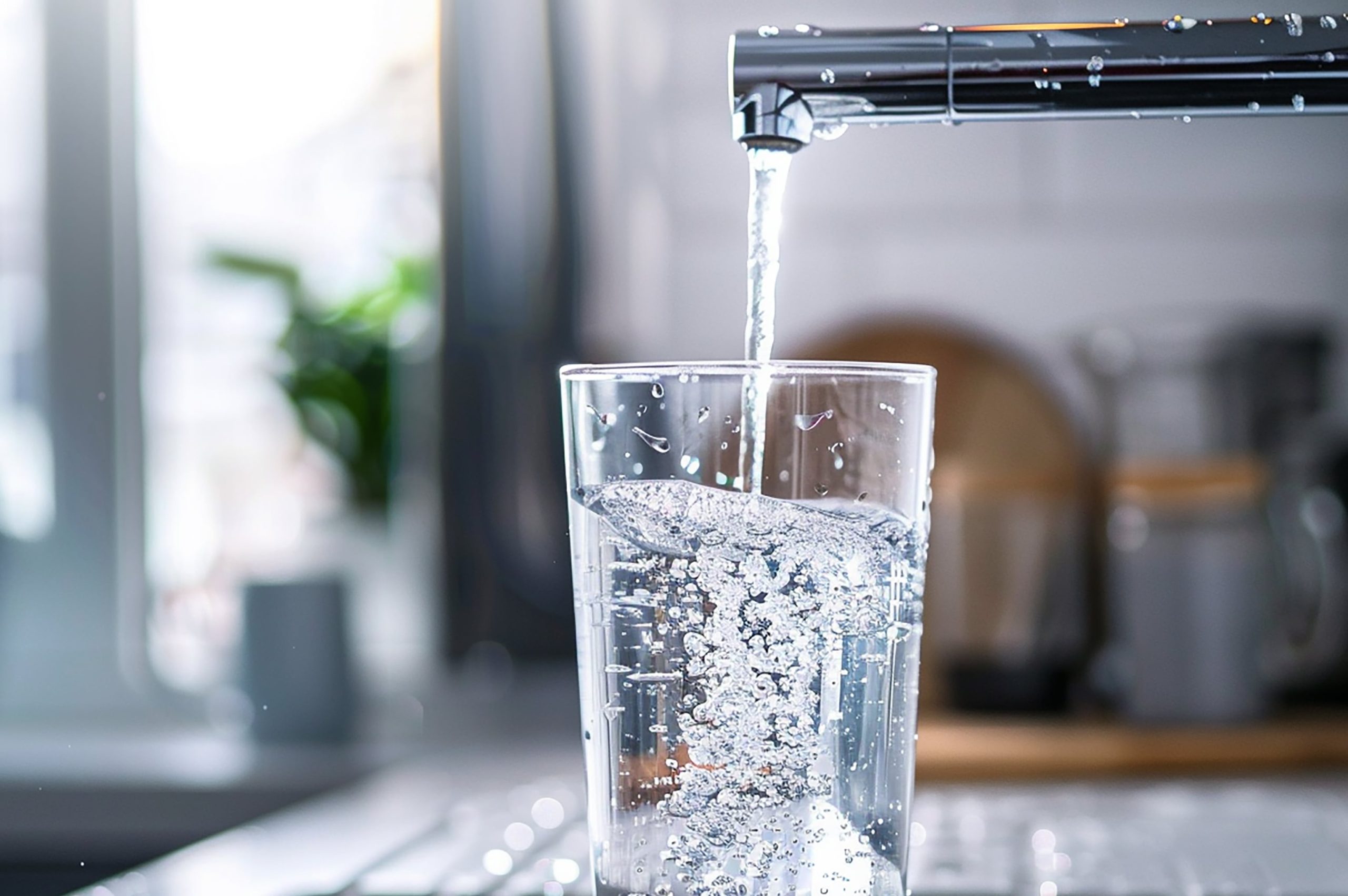
Let’s clarify some common misconceptions about RO water safety:
- Mineral Stripping: It’s true that RO does remove some beneficial minerals from water. However, the essential minerals we need are better obtained from our diet.
- Acidity: RO water is slightly more acidic than untreated water, typically ranging from pH 6.0 to 6.5. This is less acidic than many common beverages like coffee and tea.
- Water Waste: While older RO systems are quite wasteful, technological advancements have greatly improved their efficiency, significantly reducing the amount of water wasted during the filtration process.
Safety Concerns for Reverse Osmosis Water

At a minimum, reverse osmosis water has been filtered through a membrane that captures most of the dissolved solids and microbes in the water.
If your reverse osmosis system has a carbon post-filter, any volatile organic compounds, disinfectants, disinfectant byproducts, and other substances which give water a bad taste and odor have been removed in the filtration process as well.
What is left is water with fewer contaminants than the tap water piped into your home.
For those wondering, “is reverse osmosis water bad?”, the answer is, reverse osmosis water is actually far better than tap water. By removing a wide range of contaminants, a reverse osmosis water filter can limit your exposure to contaminants currently in your water and safeguard against any future rise in contaminants.
If you are asking yourself, “what is demineralized water?”, the answer is simply water with dissolved minerals and salts removed. This softens the water, while also slightly altering the taste.
The removal of minerals from water is far less of a health concern in a developed country like the United States than it is in other parts of the world.
In the United States, most people get the required minerals from their diet alone. In other parts of the world, individuals battling food insecurity and an inadequate diet may see a benefit from the mineral content in hard water.
In the United States, a healthy adult with a balanced diet should not notice any negative side effects from the removal of trace hard minerals from water.
Is Reverse Osmosis Water Right for You?

Moreover, reverse osmosis water is not only safe but also clean and great-tasting. This filtration process effectively removes contaminants like chlorine, lead, and other impurities, giving you higher quality water. If you’re choosing reverse osmosis, you’re choosing established companies like Rayne Water who ensure that your water is pure, refreshing, and healthier for you and your family.
While many people debate whether to get an RO water system, water filter, or water softener, we feel using a combination of these for your household or establishment is the best overall water treatment system solution.
Rayne has delivered top-notch water softener & drinking system solutions since 1928. Get started with us today!
Sources:
- https://www.labconco.com/articles/whats-the-difference-between-ro-and-di-water-pur
- https://www.ncbi.nlm.nih.gov/books/NBK216589/
- https://www.livescience.com/41510-what-is-distilled-water.html
FAQs
What is reverse osmosis water?
Reverse osmosis water is a type of purified water produced through a reverse osmosis water system. This system uses a semi-permeable membrane to remove impurities, contaminants, and dissolved solids from water, resulting in clean, clear drinking water.
What are the health benefits of drinking reverse osmosis water?
Drinking reverse osmosis water can help maintain hydration and reduce exposure to potentially harmful contaminants found in tap water. Its purity may also benefit individuals with specific health concerns or dietary restrictions.
Do reverse osmosis water systems require maintenance?
Yes, regular maintenance of reverse osmosis water systems is necessary to ensure optimal performance and water quality. This includes replacing filters and membranes as recommended by the manufacturer.

